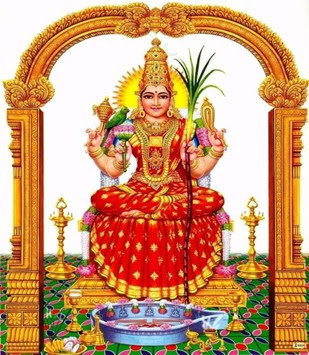The Divine Mother is worthy of worship by all universal beings.
To praise someone/something that is older/bigger/greater is mankind’s natural attribute. On behalf of Pandavas, Krishna went to Hastinapur to seek truce agreement. The opposite side had earlier decided not to show respect in court to Krishna. But when Krishna entered the court, automatically everybody stood up to praise Him. Even Duryodhana paid his respect to Krishna. The great souls or things always get their due respects.
Over the universe, there are certain things glowing, as proof of the Divine Mother’s grace and glory; mankind praises such good things as the Divine Mother’s glory. So, if there is anything worthy of respect, it is due to the Divine Mother’s grace. Once the devotee understands the Divine Mother’s glory and praises Her, it becomes a form of worship to the Divine Mother.
Youngsters pay respect to the age, learning, and meditative strengths of their elders. In turn, as they become elder, they get respected by others. The Divine Mother was there before everything else in this universe was created. She is worthy of worship by all.
She makes everyone Her followers and attendants. Saraswati Devi and Mahalakshmi attend to Her needs in Sri Nagaram. The Divine Mother occupies the position of everyone’s Guru. Therefore, She is worthy of worship in every way by all.
The Divine Mother is worthy of worship
by all universal beings.
C N Nachiappan
Singapore,
06 April 2022; updated 21 June 2025.
References:
1.
The
Thousand Names of the Divine Mother published in English by Mata Amritanandamis
AparnaSan Ramon, California, USA, with Commentary by T. V Narayana Menon
2.
Shri
Lalitha Sahasranama Stostram published in Tamil by N. Ramaswami Iyer charities’
societies, Trichirapalli, India, with Commentary by C. V. Radhakrishna Sastry.
3.
The
Lalitha Sahasranamam published in Tamil by Shri Ramakrishna Thapovanam,
Thiruipparaithurai, Trichy District, Tamilnadu, India with commentary by
Shrimath Swami Sithbavandar












